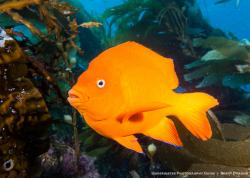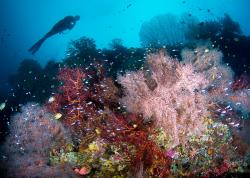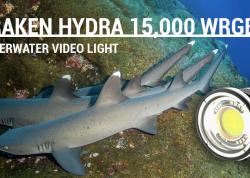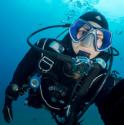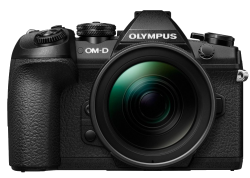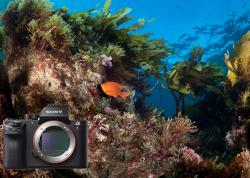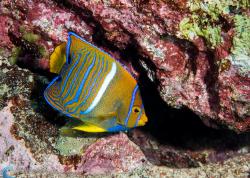Olympus OM-D E-M5 Camera Review
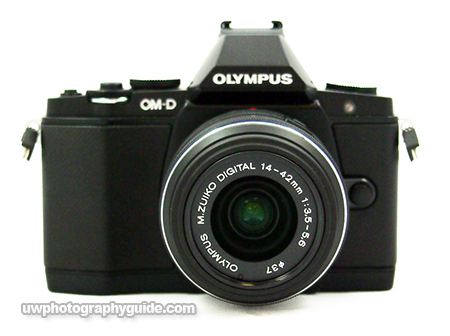
The Olympus OM-D E-M5 camera sets a new standard in the mirrorless camera line with improvements that make the gap between the mirrorless cameras and entry level dSLRs even smaller.
Overall easy to use, this camera has a little something for everyone with Olympus' standard set of auto functions, art, and scene modes. For the more advanced user, the OM-D really shines. Improvements in focus speed, image processing, flash sync speed, and more make the E-M5 a great choice if you're looking to take your photography to the next level.
E-M5 Specifications
16 MP, 4608 x 3456 max resolution
Micro-Four Thirds CMOS sensor (17.3 x 13mm)
ISO 200 - 25600
Electronic Viewfinder with 100% coverage
3" LCD Tiltable screen
Touchscreen capabilities
Micro Four-Thirds mount with a wide variety of lenses
Minimum Shutter speed 60 sec, max shutter speed 1/ 4000th
Accessory flash sync speed 1/ 250
Video recording at 1080i 60 (1920 x 1080 resolution)
Extensive weather proofing
Body Style

The E-M5 harkens back to Olympus' OM-D style SLR film cameras. A retro-styled body sets this camera apart from the previous mirrorless cameras from Olympus and other manufacturers. Still maintaining a small size, it offers dSLR-like controls through two control dials. These dials are well placed, making them easy to use for quick setting adjustments.

Unlike the other Olympus PEN models that have geared toward a more streamlined, compact look with fewer buttons, the EM-5 features a standard array of buttons, a large mode dial and two customizable function buttons. The only downside I have found is that the standard array of buttons on the small sized body results in small buttons which could be more difficult to control with larger hands.
In addition, Olympus did not include a pop-up flash, but continued with the accessory flash that attaches to the hot-shoe on the camera like the latest PEN models. While this can be nice, as you only have to have the flash when you need it for shooting, when coupled with the bump from the new Electronic Viewfinder the flash can make the camera seem a bit top heavy.

Changes from previous Olympus mirrorless cameras
The previous PEN mirrorless cameras moved from a more classic design to a streamlined look over the years, but the E-M5 brings back the classic lines. The E-M5 has a 16MP sensor vs 12MP, which is much better at handling high ISOs. The E-M5 also has control dials for changing settings, where as all PEN models have used buttons or a single wheel on the back of the camera. The E-M5 includes a tilting screen like the previous model (E-PL3) has, but this LCD is larger at 3" and includes touch screen capabilities.
Features
Electronic Viewfinder and LCD

One major improvement in the camera design is the addition of an electronic viewfinder. This viewfinder offers 100% coverage of the image. The viewfinder is clear and bright, offering a great alternative to shooting though the LCD screen. While using the electronic viewfinder, the LCD displays the important quick functions in a "Super Control Panel," allowing for easy and fast setting adjustments. A proximity sensor turns off the LCD when you bring the camera up to your face, saving battery life and your eyes. If you prefer shooting through the LCD, that is still easily accessible through the touch of a button. Live view disables the Super Control Panel, and those functions are brought up by pressing the OK button, just like with other Olympus models. If you like the look of the SCP, you can change the setting in the camera so that the SCP appears in the viewfinder by pressing the "OK" followed by the "Info" button. When using the camera in a housing, you can easily disable the automatic switch on the Live View and the EVF, allowing you to switch between the two simply by pushing the button on the camera (accessible with both Olympus and Nauticam housings).
ISO Image Tests
The E-M5 includes Olympus' Micro-Four Thirds CMOS sensor and has a 16MP resolution. Olympus has really made improvements in the low light sensitivity of the E-M5, which has ISO capability starting at 200 and going up to 25,600. The E-M5 performs well at higher ISO's than previous mirrorless models.

At ISO 1600

At ISO 3200

At ISO 6400

At ISO 12800

At ISO 25600
Image Stabilization
In addition, Olympus has completely re-designed the built-in image stabilization on the E-M5. The new multi-directional image stabilization system offers stabilization over multiple axes. This allows for better performance and ease of shooting in low-light situations.
This image was shot with the IS turned off at 1/20 F13.
This image was shot with the IS turned on at 1/20 F13.
Focus and Speed
The E-M5 improves the focus speed from previous Olympus cameras, and it holds up against other cameras on the market such as the Sony NEX series and Panasonic cameras (though the GX1 did beat out the E-M5 by fractions of a second during some of our tests).
The E-M5 blew away all of the competition with a much faster burst mode, which shoots images at up to 9 frames per second without flash. One thing I did notice is that while shooting continuously and panning the camera, the focus does not hold as well as some higher-end dSLR cameras.
Macro
The E-M5 ships with a choice of lenses. The first option is the standard 14-42mm kit lens that you find in their previous cameras. This lens works well for macro, focusing down to an image 3" across alone, and up to 1 3/4" when you add a Dyron 67mm macro diopter. This is great macro for a kit lens in general, though for an added bump you can upgrade to the new 12-50mm lens, which includes electronic zoom and a macro focus switch.

This lens is great. There are three modes on the lens, which are switched by sliding the zoom ring forward or back. Two relate to zoom control, electronic or manual, but the third locks the lens at 43mm and switches it into a macro mode. The macro mode is really what makes this lens a great choice over the less expensive standard kit lens for underwater photography. The macro function on the lens brings the focus down from a photo about 3.5" across to 1.25" across, which is fabulous for macro shooting. Add on a Dyron +7 macro diopter and you can get focus on an image less than one inch across. Nauticam will be releasing a port with control of this lens, though Olympus has not announced if it will support the lens in the housing.
Video
The E-M5 shoots full 1080i 60 video with the H.264 HD compression that is found on many recent cameras. One major improvement over the previous PEN models is that Olympus has moved away from the AVCHD file storage format, which moved all video files into a well-hidden separate file. The E-M5 saves the files as .MOV files in the same folder as your images. In addition, you can also shoot in a motion .jpeg mode.
Movie recording can occur from any still picture mode by simply pressing the red record button on the top of the camera. If you prefer something different, this function is customizable to any button through the custom menu system, so you can move the record function to another button for smoother video starts.
One small downside is that if you do start shooting a video from any of the still picture modes, the camera automatically sets to Program mode, controlling the aperture, shutter speed and ISO. The focus mode will revert to whichever mode you had set when last in video (note: the default is continuous autofocus). In order to take control over your video settings the camera must be switched to the dedicated video mode.
With the focus improvements overall on the camera, the continuous autofocus has improved some with the new E-M5, however it is still noticeable because the camera hunts a tiny bit due to the contrast-detection autofocus system. However, while underwater the lag between the camera automatically adjusting the focus on Continuous autofocus is very noticeable and too slow to be of much use. I recommend using Single autofocus, and gently pressing the shutter button halfway down to re-focus. This focus is instantaneous with very little hunting (as you can see in the video below).
Sample Underwater Video (taken with the 14-42mm kit lens)
One large improvement for video is the improved image stabilization built into the camera. The multi-axis mechanical image stabilization that the E-M5 was designed with really shines in video. Due to the multiple axis stabilization, Olympus boasts that it can cope with both the different types of movement caused by hand shake and by walking at the same time. To test this, I took two videos with the camera while walking down the street holding the camera in one hand. Take a look at the results below.
Image Stabilization test video
Conclusion
Overall I have been very impressed with the E-M5. It is a big improvement from the current PEN series of cameras from Olympus and other micro four-thirds cameras on the market. Image handling and quality compares to that of the larger sensor NEX series of mirrorless cameras, and the design is well thought out. The dual dials for settings control are great and the return of an electronic viewfinder is will make many people very happy. Video quality is good, but if you are very serious about wanting stellar video I would say to look at the NEX-5n or NEX-7 which offer more options and control on video recording.
Using the OM-D E-M5 Underwater
The E-M5 works fabulously underwater. I have been able to test out two of the housings options, Olympus and Nauticam. Both housings allow full functionality of the camera. Underwater the E-M5 still focuses quickly and accurately, which is even improved with the use of a focus light. The faster sync speed of 1/250 is great for both macro and wide-angle shots, allowing more creative lighting by stopping down to bring out black backgrounds in macro shooting and more control on the ambient light with wide-angle.
Underwater Housing Options
Nauticam Housing

The NA-EM5 housing fits the camera like a glove and is designed extremely well so that it is easy to use, and changing functions in the camera is a breeze. The housing is made out of machined aluminum with a good grip that makes holding onto the housing and taking pictures easy and very comfortable. Buttons mirroring the camera are organized on the housing in a way to make it easy to access and control underwater, even when wearing gloves. Nauticam placed the two control dials nicely so that you can easily adjust both without letting go of the housing, or your handle.
Nauticam Housing Specs
Machined aluminum, nicely sized with a good grip, and well-placed buttons.
Includes Nauticam's classic port release system, making port changes quick and easy.
Zoom control is easy to turn with one finger, and works well with gloves.
All buttons are tiered for ease of use underwater.
Aperture and shutter speed buttons are easy to turn and well placed for easy manipulation and quick setting changes.
Viewfinder control button allows switching between the LCD and EVF (need to turn off the automatic LV sensor).
Included moisture detection system.
LCD window is large, and allows easy viewing of the LCD, which is tilted for an optimal viewing angle.
The EVF window has slight magnification, making it easy to view the full viewfinder.
Housing is designed for flash to be popped up, so there is no need to change the camera settings for UW mode (allowing for customization of the both of the Fn buttons).
Shutter is firm and easy to use - easy to get half-shutter focus.
Video record is a lever, easy to activate while keeping hand on housing and making it much easier to limit any shake at the beginning of the video.
Includes hot shoe mount and fiber optic ports (S&S and inon style).
Includes a bulkhead port for an optional bulkhead so that you can use sync cables from the hot shoe on the camera.
A wide variety of ports is available for both Olympus and Panasonic's Micro 4/3rds lenses.
Olympus Housing

The Olympus PT-EP08 continues in the style of previous Olympus housings, with the black polycarbonate body and red front on the port. One big improvement is an updated port system which allows for easy port changing. However at this time, Olympus has not confirmed if they will be creating new ports to fit the variety of lenses available for the E-M5. Right now they only have the port for the 14-42mm kit lens. The buttons are large and easy to manipulate, even in gloves.
Olympus Housing Specs
Polycarbonate housing, clear backplate allowing some view into the o-ring with a good front grip.
Shutter lever is precise and easy to get half-shutter focus.
All the buttons are tiered, making it easy to use underwater, even in gloves.
Zoom control is placed well and easy to use with two fingers.
One downside: the aperture and shutter speed dials are not easily reached, and require moving the hand off the housing and using two fingers to turn.
Housing was designed to be more ergonomic, and to be used with the UW Mode activated so the flash will fire without being popped up. Unfortunately this also takes up one of the customizable Fn Buttons.
The location of the video start button required me to remove my hand from my handle, making smooth video starts difficult.
The port system was completely redesigned from previous housings, allowing quick and easy port changes, with a loud secure click on the locking mechanism.
Includes a hot shoe mount and 2 fiber optic ports.
Includes a button to switch between the EVF and LCD screen underwater.
Sample underwater images

F20 1/250 with YSD-1 strobes, 45mm macro lens

Uncropped, F22 1/250, 45mm macro lens

F22 1/250, Dyron 67mm +7 diopter, 14-42mm lens
For more great Olympus OM-D EM-5 underwater photos, read Jim Lyle's excellent report diving Cozumel with the Olympus OM-D E-M5.
Special Sale - Olympus Bundle
You can currently get an Olympus OM-D E-M5 housing & camera bundle for 35% off, it is quite an incredible deal, while it lasts!
About the Author
Kelli Dickinson is an avid diver, manager of Bluewater Photo Store and an industry expert on mirrorless cameras and housing options. You can reach her by email at kelli@bluewaterphotostore.com.
Further Reading
RECOMMENDED ARTICLES
SUPPORT THE UNDERWATER PHOTOGRAPHY GUIDE:
The Best Service & Prices on u/w Photo Gear
 Visit Bluewater Photo & Video for all your underwater photography and video gear. Click, or call the team at (310) 633-5052 for expert advice!
Visit Bluewater Photo & Video for all your underwater photography and video gear. Click, or call the team at (310) 633-5052 for expert advice!
The Best Pricing, Service & Expert Advice to Book your Dive Trips
 Bluewater Travel is your full-service scuba travel agency. Let our expert advisers plan and book your next dive vacation. Run by divers, for divers.
Bluewater Travel is your full-service scuba travel agency. Let our expert advisers plan and book your next dive vacation. Run by divers, for divers.






